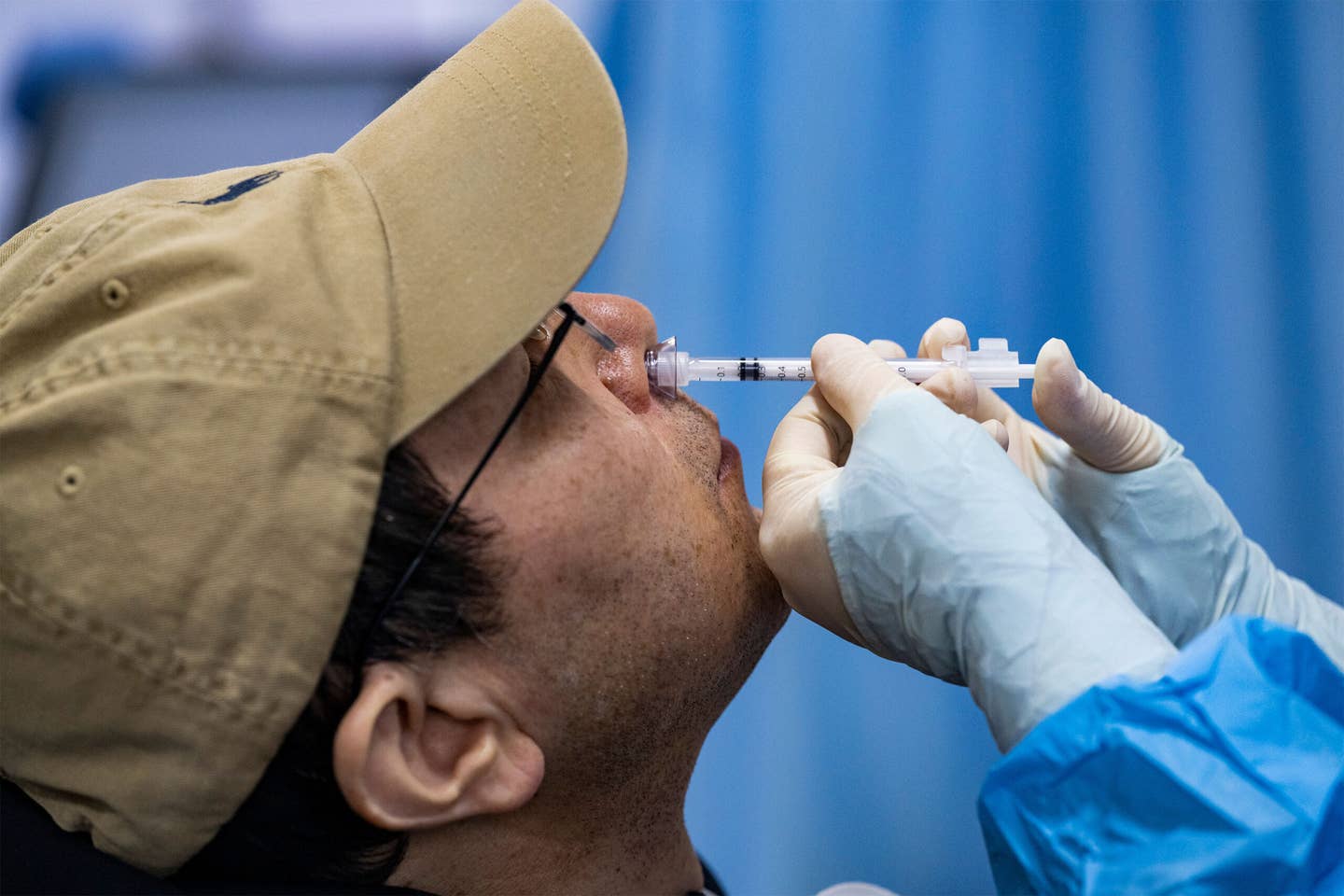Breakthrough nasal vaccine stops COVID-19 transmission cold
Study discovered that next-generation vaccines targeting the nose and mouth — might succeed where traditional shots have failed.

COVID nasal vaccine (CREDIT: HealthCentral)
The rapid development of COVID-19 vaccines just months after the virus emerged was a triumph of modern science, saving millions of lives. However, while these vaccines significantly reduced illness and death, they couldn't end the pandemic due to a key limitation: they didn't prevent the spread of the virus.
Researchers at Washington University School of Medicine in St. Louis have discovered that next-generation vaccines targeting the virus’s entry points — the nose and mouth — might succeed where traditional shots have failed. Their study shows that a nasal COVID-19 vaccine, based on Washington University technology, can prevent virus transmission.
This vaccine, already approved for use in India and licensed to Ocugen for further development in the U.S., was tested on hamsters. The vaccinated hamsters developed infections but did not transmit the virus to others, effectively breaking the transmission cycle. In contrast, an injected COVID-19 vaccine failed to stop the virus's spread.
Published in Science Advances, these findings suggest that mucosal vaccines, administered through the nose or mouth, could be crucial in controlling respiratory infections like influenza and COVID-19. “To prevent transmission, you need to keep the amount of virus in the upper airways low,” explained senior author Jacco Boon, PhD, a professor of medicine.
He emphasized that less virus in the airways means a lower likelihood of infecting others through coughing, sneezing, or even breathing. Boon highlighted that mucosal vaccines outperform injected ones in limiting viral replication in the upper airways and preventing spread, which is crucial during an epidemic or pandemic.
Developing vaccines that control virus levels in the nose has been challenging. Viruses like influenza, SARS-CoV-2, and respiratory syncytial virus (RSV) multiply quickly in the nose and spread within days of initial exposure. Traditional injectable vaccines generate immune responses that take about a week to reach full strength and are less potent in the nose than in the bloodstream, leaving the nose vulnerable to fast-spreading viruses.
A vaccine administered directly into the nose or mouth could limit viral reproduction and reduce transmission by eliciting an immune response right where it’s needed. However, proving that mucosal vaccines reduce transmission has been difficult. Animal models of transmission are not well-established, and tracking person-to-person transmission is complex due to the numerous daily interactions people have.
Related Stories
Boon and colleagues developed a model for community transmission using hamsters and used it to test the effect of mucosal vaccination on SARS-CoV-2 spread. Unlike mice, hamsters are naturally susceptible to SARS-CoV-2, making them ideal for such studies.
They immunized groups of hamsters with laboratory versions of approved COVID-19 vaccines: the nasal iNCOVACC used in India or the injected Pfizer vaccine. Some hamsters were not immunized for comparison. After allowing time for immune responses to mature, they infected other hamsters with SARS-CoV-2 and placed the vaccinated hamsters with the infected ones for eight hours, simulating the experience of vaccinated people exposed to COVID-19.
Most vaccinated hamsters became infected after exposure, with virus found in the noses and lungs of 12 of 14 (86%) hamsters given the nasal vaccine, and 15 of 16 (94%) hamsters given the injected vaccine. Importantly, those immunized nasally had virus levels in the airways 100 to 100,000 times lower than those vaccinated by injection or not vaccinated at all. Although the study didn’t assess health outcomes, previous studies showed both vaccines reduce the risk of severe illness and death from COVID-19.
In the second part of the experiment, vaccinated hamsters that developed infections were placed with healthy vaccinated and unvaccinated hamsters for eight hours to model virus transmission from vaccinated individuals. None of the hamsters exposed to nasally vaccinated hamsters became infected, regardless of their vaccination status. Conversely, about half of the hamsters exposed to those vaccinated by injection became infected, showing that nasal vaccination breaks the transmission cycle, unlike injected vaccines.
These findings are significant as the world prepares for potential avian influenza outbreaks. An injectable vaccine for avian influenza exists, and a team at Washington University, including Boon and co-author Michael S. Diamond, MD, PhD, is working on a nasal vaccine for avian influenza.
“Mucosal vaccines are the future of vaccines for respiratory infections,” Boon said. Despite the challenges in developing such vaccines, he is optimistic. “There’s still so much we don’t know about the kind of immune response we need and how to elicit it. I think we’re going to see a lot of very exciting research in the next few years that could lead to big improvements in vaccines for respiratory infections.”
Note: Materials provided above by The Brighter Side of News. Content may be edited for style and length.
Like these kind of feel good stories? Get The Brighter Side of News' newsletter.
Joshua Shavit
Science & Technology Writer | AI and Robotics Reporter
Joshua Shavit is a Los Angeles-based science and technology writer with a passion for exploring the breakthroughs shaping the future. As a contributor to The Brighter Side of News, he focuses on positive and transformative advancements in AI, technology, physics, engineering, robotics and space science. Joshua is currently working towards a Bachelor of Science in Business Administration at the University of California, Berkeley. He combines his academic background with a talent for storytelling, making complex scientific discoveries engaging and accessible. His work highlights the innovators behind the ideas, bringing readers closer to the people driving progress.



